Traditional cuisine and typical Easter dishes: Rome and the Roman countryside
At Easter, each territory has its traditions to celebrate the Resurrection of Jesus at the table: a moment of joy that is also emphasized in Rome by traditional cuisine with typical local dishes.
It all starts on Sunday morning in correspondence with the discovery of the empty tomb and the thrill for the rebirth of hope. The origin of the practice of the Easter Breakfast on Sunday, therefore, is born to celebrate the Resurrection of the Son of God with a table full of dishes.
A breakfast that was much appreciated especially after the fast of Lent because, after being deprived of food, feasting meant returning to life. The Roman-style Easter breakfast is a hymn to the joy that reconciles people with life and for centuries has been offering both sweet and savoury dishes. All accompanied by coffee, but also by white wine from the Castelli Romani to accompany the food.
The full breakfast includes: corallina salami, savoury pie, hard-boiled eggs, hot homemade bread, beaten pizza (actually a sweet Easter cake to eat with chocolate eggs), omelette with artichokes and lamb offal with artichokes.
But let's start by degrees: the salami called ‘corallina’ is a salami specialty with very very obvious bits of pork fat in the filling. The lamb chop, on the other hand, is a dish based on lamb entrails that are chopped, and cooked in a pan with onion after flavouring them, to which the already prepared artichokes are later to be added.
Easter comes in spring and the artichoke is the symbol of these days that is used both for breakfast and then for the picnic of Easter Monday when it is cooked on the grill, perhaps with the "matticelle", the vine shoots. Both to the south of Rome with the Artichoke of Sezze, and to the north with the Roman artichoke of Cerveteri, Lazio has a great variety of local DOP artichokes.
In the Easter breakfast in Rome you cannot miss the "pizza sbattuta", that is a cake similar to the sponge cake that should not be confused with the Torta Pasqualina.
In Rome, Torta Pasqualina is a savoury pizza filled with spinach, ricotta and eggs.
Sbattuta (beaten) pizza is a leavened savory cake, also typical of many areas of central Italy based on flour, eggs, pecorino or parmesan. It is traditionally served at breakfast on Easter morning or as an appetizer for Easter lunch, or still eaten in Easter Monday outings.
[caption id="attachment_43746" align="center-block" width="640"]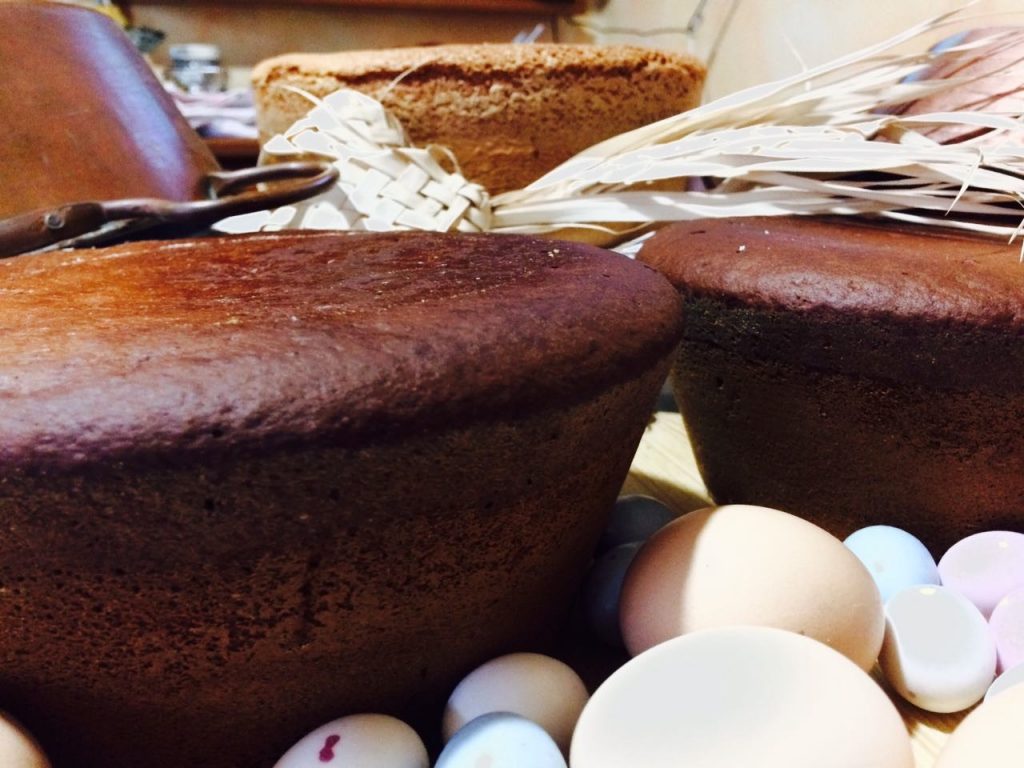
Easter pizzas from Rocca Priora. Picture by Chiara Rossi[/caption]
Finally, chocolate eggs: the tradition of colouring eggs at Easter dates back to Roman times, as told by Pliny. The first colour used was red, like the colour of the blood of Christ. It is said that when Mary of Magdala announced the Resurrection of Christ, Peter said: "I will believe it when the eggs are lain red". Then Maria discovered the basket and noticed that the eggs were all red.
In the Middle Ages during Lent it was forbidden to eat eggs, because of animal origin. Thus the use of colouring them during Holy Week was affirmed with geometric designs and prevalence of red and blue tones. These eggs, then, on Good Friday were taken to church to be blessed, so that they could be consumed on Easter morning.
The complexity of the traditional Roman cuisine of Easter is such that families usually start cooking the day before, to avoid having to do it all the same day. In the Easter breakfast there is no fixed order on what should be eaten before and after and everyone eats everything according to the order they prefer.
Easter lunch in Rome
Did you think that breakfast would be enough to celebrate Easter?
Big mistake: the party continues at lunch with a rich menu of traditional dishes. After the appetizer, the Easter lunch begins with the Easter ‘brodetto’, a broth of capon and lamb made with eggs, lemon juice, grated parmesan and toasted bread. Practically it is a stracciatella.
The poet Gioacchino Belli in the sonnet "La Santa Pasqua" inserts it among the dishes on the table for this holiday.
To continue, the first course is based on fettuccine with chicken giblets. But the dish of true tradition is the abbacchio, lamb cooked on the grill or in the oven, accompanied by fried artichokes and potatoes. With its tender and tasty meat, it has played a leading role in the gastronomy of the this area for thousands of years, so much so that in the Rome of the Popes its trade was protected with "ad hoc" laws and decrees.
The name Abbacchio Romano refers exclusively to dairy lambs bred in the Lazio Region and since 2009 it has been protected by the IGP mark. In the regional cuisine there are many ways to cook lamb: baked with potatoes, white wine and rosemary (alla Romana), cooked in a pan with vinegar, rosemary and sage (alla Cacciatora), cooked on the grill using only the ribs with rosemary, oil, pepper and lemon (Scottadito).
Easter Monday picnic
The 'feast' of traditional Roman Easter cuisine does not stop on Sunday and continues the day after, on Easter Monday. In this case the main course is that of the artichokes that are prepared in various ways. The "matticella" artichoke is grilled with vine shoots, while the "alla romana" is cooked with garlic, parsley and mint and stewed in a pan over low heat.
At the Easter Monday picnic, Roman Ricotta cannot be missed, which is obtained exclusively from whey. The best is the one with sheep's milk coming from the local region and since 2005 has been protected by the DOP mark.
[caption id="attachment_77223" align="center-block" width="640"]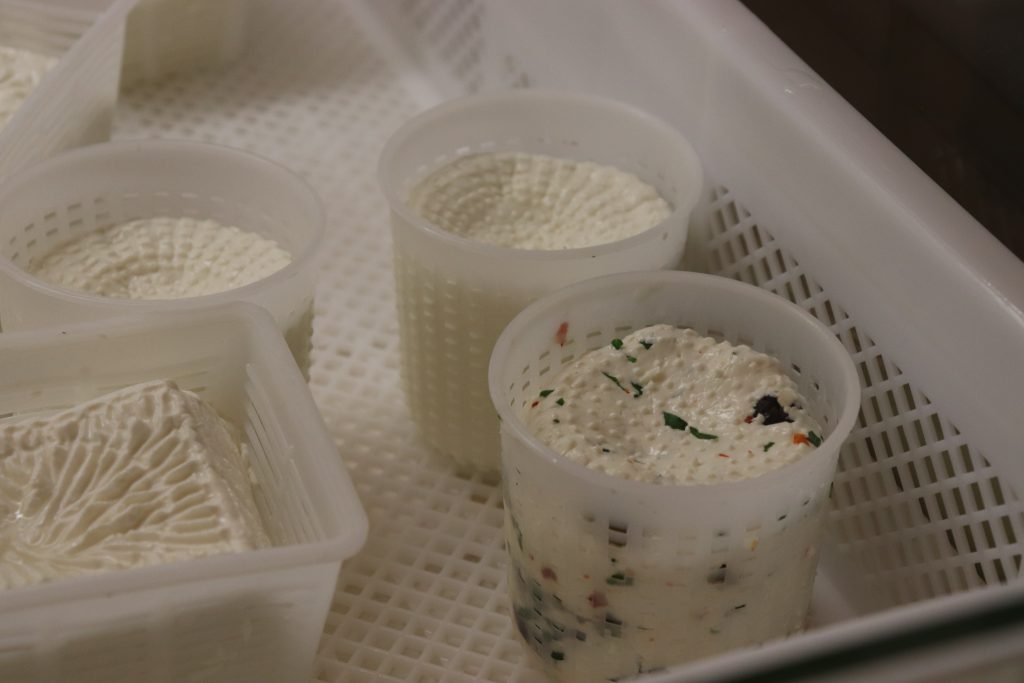
Picture by Benedicta Mary Lee[/caption]
Among the traditional agri-food products, there are many sweet and savoury Easter-related preparations, such as pizza sbattuta or Easter cake, made with different recipes in the various parts of Lazio. In the provinces of Rome, Frosinone and Latina, the Torta Pasquale is a sweet donut, based on liqueur or aniseed with a delicate flavour and depending on the area of production it can be glazed or enriched with boiled eggs.
Typical of the Easter period are also the Cavallucci and the Pine Cones of Palestrina, large dough biscuits as big as a cake, garnished with coloured sugared almonds.
At this point you have to take a long walk or play the traditional five-a-side football matches on the lawns to be able to dispose of all the calories of traditional Easter Rome cuisine!
Traditional cuisine and typical Easter dishes: Frosinone and Ciociaria
In Ciociaria the celebrations of Easter at the table begin with a Sunday breakfast, the day of the Resurrection, which finishes the fast of the previous days.
In Ciociaria and Rome, the Easter Breakfast is a real ritual and the tradition includes eating boiled eggs (symbol of rebirth and new life), salami (corallina in Rome), lamb offal with artichokes, chocolate in the cup, the " Tortolo ”or“ Tortano ”(sweet bread made with eggs), donuts in syrup and smooth donuts, omelette, pancakes, fruit.
The Easter omelette has many varieties depending on the field products that you have available such as: wild herbs, asparagus and mint, pecorino and pancetta. But it is in the dessert or in the pizza (sweet salty cake) that the greatest varieties meet and each town has its local traditions.
The "Tortolo" in Ciociaria is a dessert made with flour, eggs, oil, a little milk, a tablespoon of anise, salt and yeast. The tradition of the Easter savoury cake varies from town to town: for example
The "Tortaro Ciociaro", is a tall soft bread with an anise scent and aroma of rum that resembles panettone but without candied fruit or cheese. The ingredients are prepared the day before and it is served at the table with hard-boiled eggs, salami, chocolate and wine.
In splendid Anagni famous for the "Sistine Chapel of the Middle Ages", the "sweet tradition" is used and the Torta Pasqualina is made with shortcrust pastry filled with ricotta and alchermes liqueur.
The "pigna" is a typical Ciociaria dessert eaten at Easter but whose roots are found in the Kingdom of Naples. It is used a lot in Ceccano and in the area of Amaseno, the ancient County of the Counts of Ceccano, where it has the shape of panettone. It is a simple dough made with flour, eggs, sugar, yeast that comes from the fermentation of yogurt or taken from the dough of bread.
Generally it is without filling but the various aromas and a hint of liqueurs give to Ciociara Pigna a particular taste. To prepare a good Pigna it takes 4 days of leavening and once it is ready it can be kept for 40 days.
[caption id="attachment_47713" align="center-block" width="640"]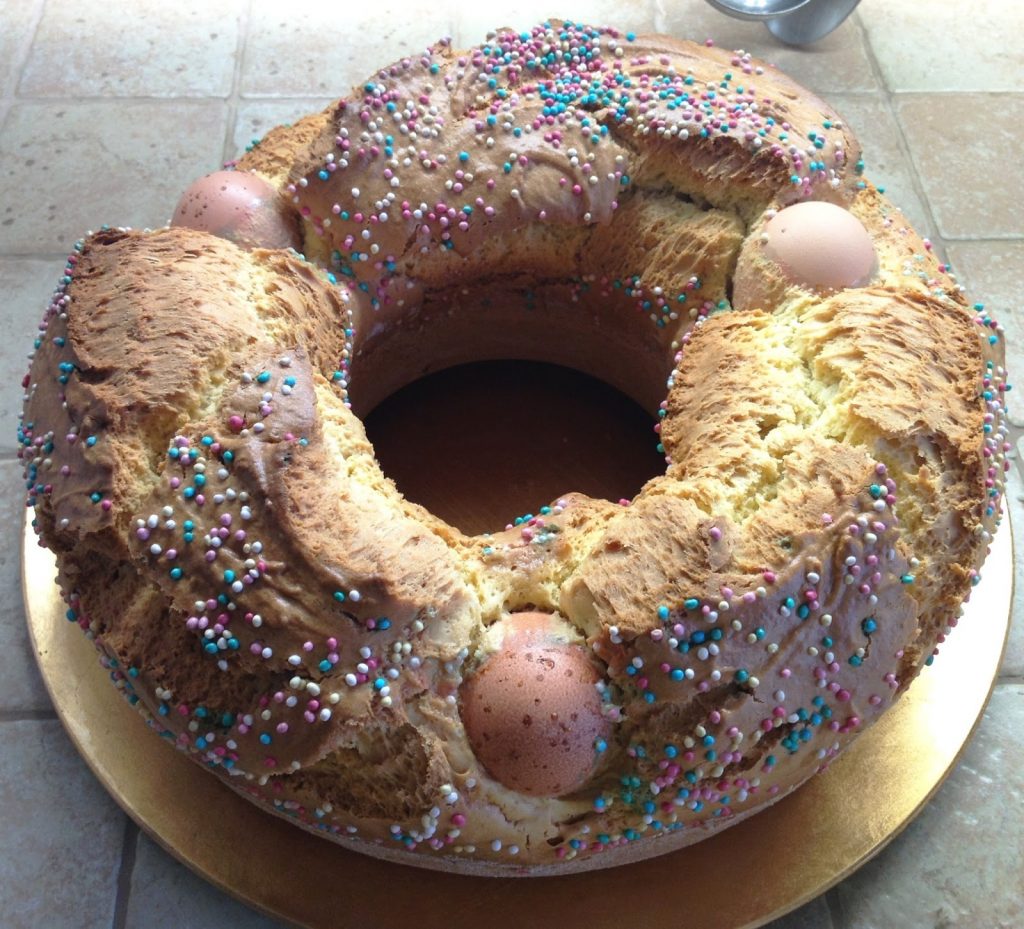
Easter Pigna[/caption]
La Pigna is a typical Easter cake also of Arpino. Always in the shape of a panettone, it is prepared with raisins, candied fruit, vanilla, cinnamon and anise. It requires a long preparation and has a special taste, with the aromas of candied orange and lemon and a hint of liqueur, covered with a glaze of dark sugar.
In Ciociaria the Easter pizza is a sweet bread that you start preparing in the evening with a dough of leavened flour and brewer's yeast. It is a dessert made with milk, candied fruit, raisins, vanilla and cinnamon, decorated with coloured confectionery sprinkles.
The variant of the Easter pizza in Ciociaria can also be a savoury bread in which, instead of the previous ingredients, the pasta prepared the night before is cooked with eggs, extra virgin olive oil, grated pecorino cheese, salt and pepper.
In Ciociaria the Easter lunch begins with the cold cuts, the Ciociarian ‘little couples’ (pork tendons that are produced a little everywhere but above all in Guarcino) and dried sausages. Lunch then continues with the traditional hand-made fettuccine (called ‘fine-fine’ when they are cut very thin) or macaroni. The main dish is made with lamb cooked in the oven with potatoes.
The celebrations then continue on Monday morning in Easter Monday with the traditional picnic where the omelette is brought with the offal that is consumed along with the remains of the Easter lunch. The coratella, i.e. the innards of the lamb, are sold by the butcher so that during these days people eat dishes that involve them.
Tradition calls for a large omelette with small pieces of onion, onion, red pepper, mint and bay leaf.
In some Ciociaria towns at Pasquetta (Easter Monday) a bread made with eggs, flour and milk was prepared for children, to which a whole egg was placed in the centre before being baked: a loaf-shaped bread for boys and a doll for girls. La Tosa di Pasqua is a typical Easter cake that has the traditional doll shape (defined as the "pupa") for females and donut-shaped ("ju campanaro") for males. The shape for children could also be a horse with an egg in the centre.
The doll and the donut or horse was prepared at home on Holy Thursday and was given to children on Easter Sunday, after being blessed in the church. This tradition dates back to the 1900s when flour and sugar were still luxury items.
In the typical Supino recipe, Tosa di Pasqua is a sweet made from sugar, flour, milk, eggs, extra virgin olive oil, anise seeds, salt, sambuca, vanilla and yeast.
Traditional cuisine and typical Easter dishes: Viterbo and Tuscia
The resurrection of Jesus is celebrated with large tables laid with food that put an end to the fast of Lent. North of Rome, in Tuscia, the Easter Breakfast could be of two types: one closer to the traditional cuisine of Rome and one to the Tuscan one.
The "fat" Easter breakfast is based on lamb coratella, various cold cuts, hard-boiled eggs and sweet or cheese-flavored Easter ‘pizzas’. The other breakfast starts with capocollo salami and the boiled eggs accompanied by the cheese pizza and ends with a cup of chocolate in which the sweet pizzas are soaked.
The lamb coratella are the entrails of the animal that are then consumed on Easter Sunday so they had to be cooked so as not to waste anything. In Tuscia the coratella is cooked with onion, garlic, salt, pepper, two large onions, extra virgin olive oil, white wine and at the end a little tomato paste. It is accompanied by a good red wine.
The Easter Pizza in Tuscia is cooked in a wood-fired oven producing a high and soft pizza, produced from a dough made in the previous days (it is prepared on Thursday or Good Friday to be eaten at Easter Day) with many eggs and is made in two modies, dolce or cheese, both with the characteristic mushroom shape given by the mold in which it is leavened.
The Sweet Pizza is characterized by a strong cinnamon flavor while the cheese one has the marked taste of pecorino and is a product that is typically made also in the Marche and Umbria (Acquapendente and Labro that are municipalities of Lazio on the border with Umbria realize similar pizzas).
Today Easter Pizza is recognized as a Traditional Agri-food Product.
Moving towards the sea, from the Maremma Laziale to Civitavecchia, anise is the common point in the preparation of Easter Pizza which in Civitavecchia is called Torta Pasqualina in the cheese version.
If this breakfast seems rich to you, you still don't know what awaits you for lunch!
The Easter lunch in Tuscia begins with a home-made antipasto of cured meats like the capocollo and the carallino salami sometimes accompanied by carrots in an aromatic soup.
We continue the Easter lunch in Tuscia with the first course, chicken or capon broth with stracciatella and a plate of fettuccine with giblet sauce. Next, first the hen (or the capon) is served, accompanied by two slices of filling made by mixing together the breadcrumbs soaked in the egg and small pieces of giblets of the same animal.
Continue with the roast lamb with potatoes, sometimes replaced by the lamb broth. The meat is always accompanied by artichokes, which will be the main dish of the Pasquella picnics, and fresh vegetables such as puntarelle seasoned with an anchovy sauce in olive oil and garlic.
Lunch ends with the traditional dessert, the homemade Easter pizza.
In the Easter Monday afternoon, in Tuscia a rich snack is consumed with traditional dishes including stuffed roast rabbit, fried frog, omelette with strigoli (field grss), capocollo and lombetto, plus sweet and savoury Easter pizza.
For the little ones on Easter Monday in Tuscia two leavening cakes were prepared, called "Scarsella" and "Bracone", made with the same pizza dough.
Sometimes San Giuseppe fritters are also served, which are puffy, golden bignole (profiterole) that are served without filling, simply sprinkled with granulated sugar and icing sugar. Pancakes are formed by dripping the dough in oil from a spoon.
Traditional cuisine and typical Easter dishes: Rieti and Sabina
The traditional Easter cuisine of Sabina has been handed down for centuries and has a peasant soul. The whole of Sabina has always been a rural area and all the popular traditions follow the seasons.
The traditional Easter meal is rich and varied and is linked to ancient propitiatory cults of the renewal of life and production. At Easter in Sabina they eat pasta and timbales, spring soups such as ‘acquacotta’ (broth based bread soup) and delicate seasonal vegetables. Add to this eggs, boiled or cooked in omelettes with herbs, roast lamb, fricassee with egg, coratelle cooked with artichokes and corned rabbit.
[caption id="attachment_60659" align="center-block" width="640"]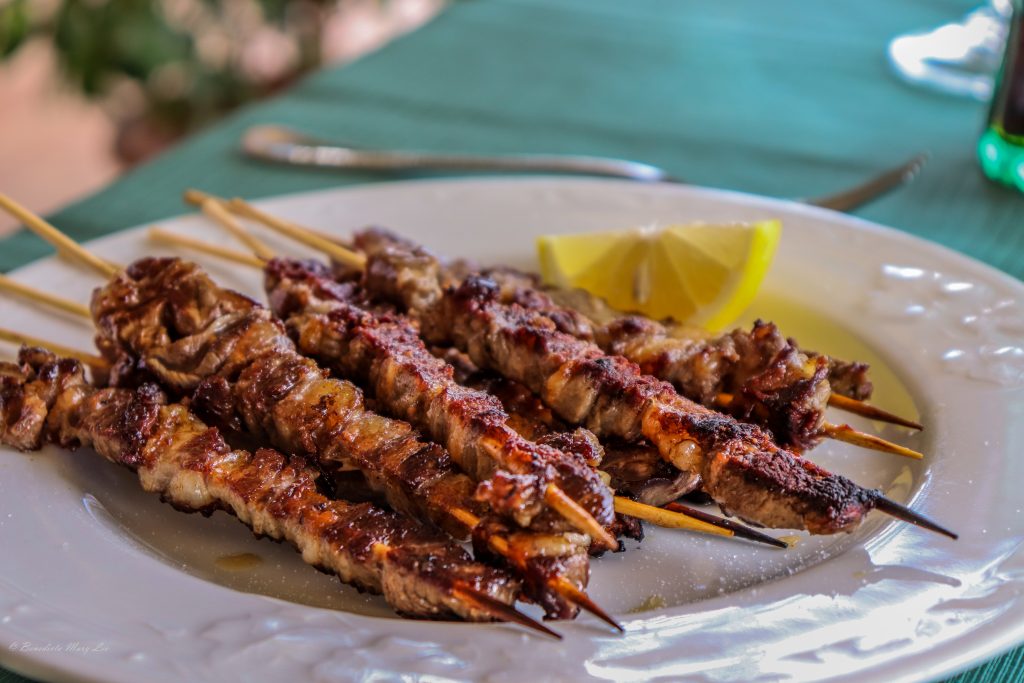
Picture by Benedicta Mary Lee[/caption]
To these foods that enrich the table are added traditional desserts, such as Easter pizzas prepared during Holy Week and blessed by the priest.
Leonessa's ‘Fat Pizza’ is salty based, mixed with local butter, spices and salami. In the shape of a loaf or roll, the outer crust is light brown and the light yellow internal paste is enriched with bits of various cured meats. Fat Pizza comes from the domination of the Kingdom of Naples, since this is a product developed in the same way also in Naples, but there called Salty Pizza.
Fat Pizza is produced today during almost all the winter period, while in the past it was one of the gastronomic preparations of the Leonessa families who were preparing to celebrate Easter. Even today, on Easter Sunday, Leonessa has a living tradition of preparing the tables for breakfast with fat pizza, red wine, boiled eggs, lamb omelette and various cold cuts.
Leonessa's Fat Pizza is among the PAT (Traditional Agri-food Products) of the Lazio region.
Also characteristic is the Pizza Pasquale della Sabina, a conical-shaped focaccia kneaded with soft wheat flour, eggs, rum, sugar and candied fruit, which can be sweetish or slightly salty.
The Cavallucciu and the Pucanella are instead sweet flavoured loaves of Amatrice. The shape of the cake was chosen based on the sex of the child who received it as a gift, cavallucciu for boys and pine cones or pucanelle (dolls) for girls. Cavallucci and pucanelle were mostly consumed during Easter Monday's picnic.
Traditional cuisine and typical Easter dishes: Latina, the Pontine plain and the Coast of Ulysses
The traditional Easter cuisine in the Pontine area and along the Lazio coast has roots that delve into the Bourbon Kingdom and Roman cuisine.
The desserts marked the end of Lent in which believers ate only“di magro”: pasta, bread, polenta, vegetables, minestrone, legume soups and white bean porridge. Fish such as herring could also be consumed.
A herring, with such a tantalizing taste, usually had to be enough for the whole family. On the Lepini Mountains the poor families kept it hanging from the wood of the ceiling to rub it over the bread so that it could take on flavour.
Among the desserts that are prepared at Easter, Tortolo di Sezze has a prominent place: a sweet flour-based loaf, flavoured with lemon peel and sambuca, with which you have breakfast on Easter morning. In Sezze, as well as with Tortolo, you also have breakfast with ciambellone, ‘sbattuta’ pizza and “caciata” which is a sweet made with ricotta, the same as Bassiano's pizza.
As an Easter dessert in Formia and in the lower Lazio, instead, they eat Pigna, a simple and tasty dough that in the Pontine is braided and is served at the end of a meal. One of the versions of this dessert in this area is that it is covered with a glaze of dark sugar. It is prepared, as mentioned, during the Easter period using flour, brewer's yeast, granulated sugar, eggs, butter, salt, anise and icing sugar.
In Bassiano during the Easter period, besides the Bolognese (soft donuts present throughout the year), you can also enjoy the Pizza Casata which is a dessert made with ricotta, bacon and bacon.
Going south it is possible to hear the Neapolitan tradition: for example in Ponza Easter is celebrated with Casatiello, made with flour, eggs, sugar, lard and yeast, while in Gaeta and Castelforte it is the pastiera.
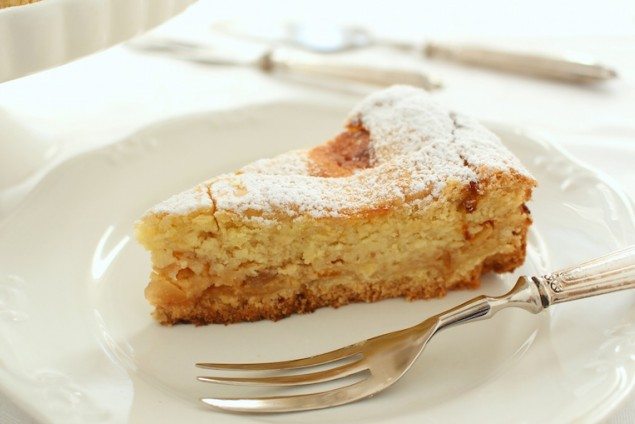
In the "Ciociara" part of the mountains, in Roccasecca dei Volsci the Pizza Casata is called "caciatella" and is prepared with ricotta, eggs, sugar, cinnamon and lemon peel. With these ingredients you make a cream with which a sheet of flour and eggs is filled. Finally, sprinkle with sugar and cinnamon and garnish with parts of the same dough and cook.
For the Easter lunch, also on the Plains of the Pontine as per the Roman tradition the lamb is consumed, baked in the oven with potatoes and rosemary.
On the other hand in the spring the lambs were born and the Abruzzese shepherds who had come to winter in the heat of the sea were preparing to return to their mountain villages to spend the summer in a cool place and with broad green pastures available for the animals.









Follow us